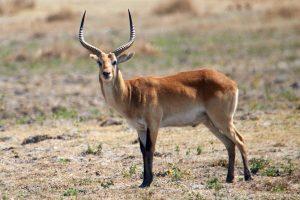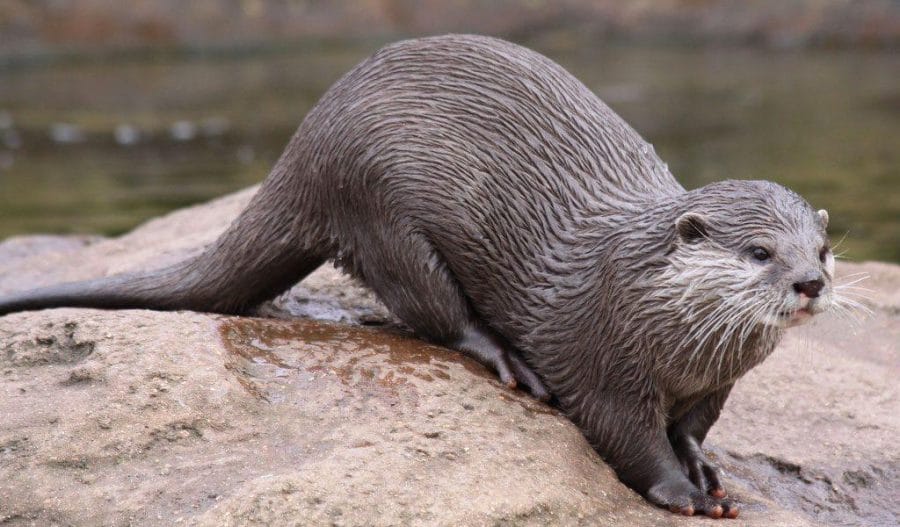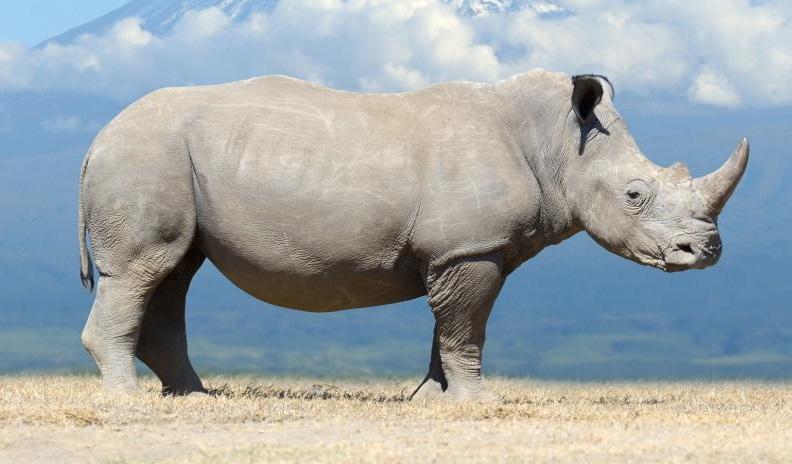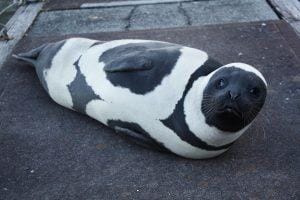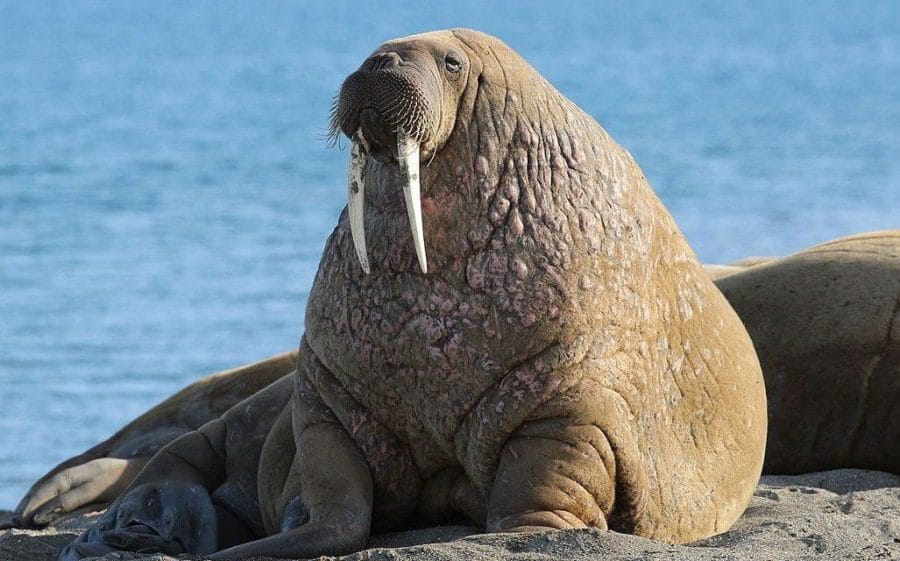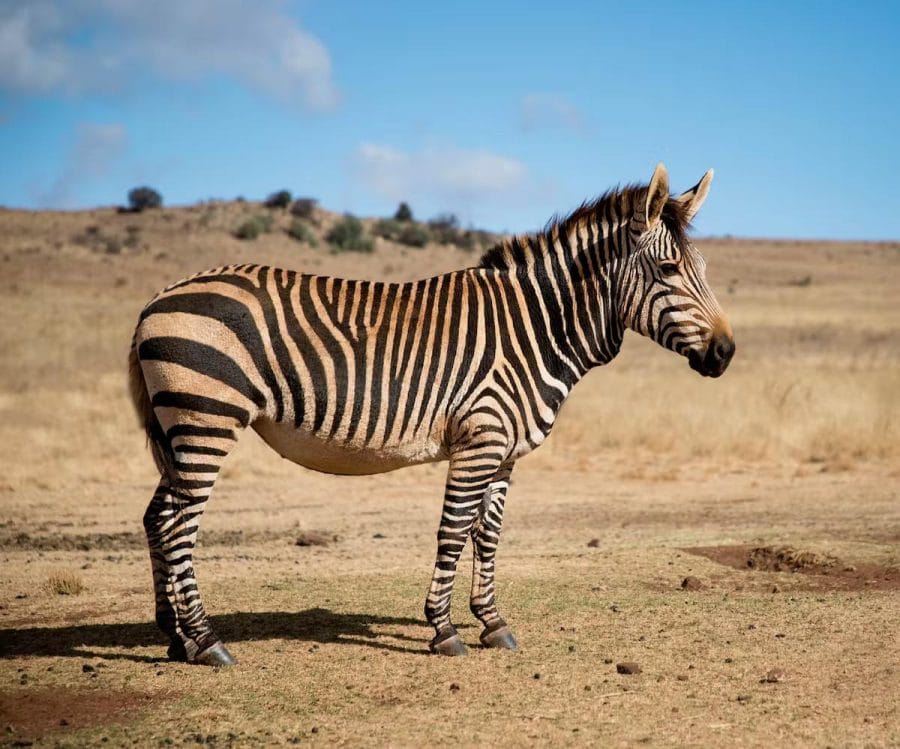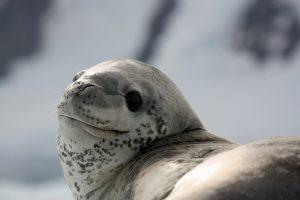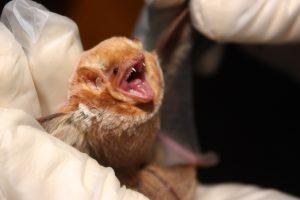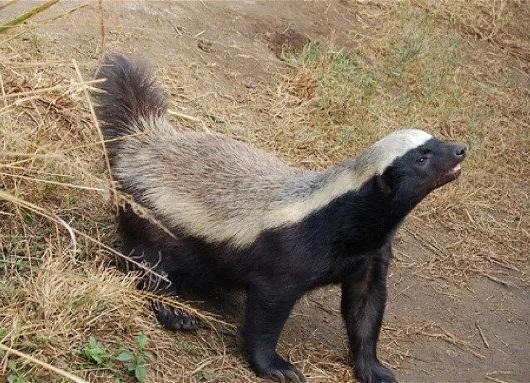- Description
- Scientific Classification
- Evolution
- Anatomy
- Characteristics
- Habitat
- Reproduction
- Life Cycle
- Adaptations
- Conservation
What is a Mammal?
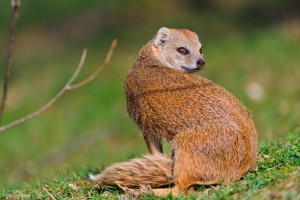
Warm blooded animals included in the Amniota clade are collectively known as Mammals. Animals in the class Mammal are distinguished from other amniotes like birds, reptiles and amphibians by various physical features including the presence of hair, the neocortex region in their brains and the presence of mammary glands in females. The modern name "Mammal" is derived from the class's scientific name Mammalia and was first coined by Swedish zoologist Carl Linnaeus in the year 1758.
Mammal Classification
At present, there are more than 5,000 extant species belonging to the Mammalian class. These species are divided into 3 subclasses which are then further classified into various orders. There is considerable amount of dispute among biologists regarding the Mammalian classification. Following is the general classification of the animals:
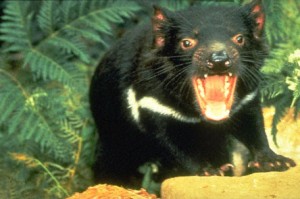
Subclass Eutheria (includes the placental mammals)
- Order Artiodactyla (the even-toed ungulates such as deer, cows, antelope and camels)
- Order Perissodactyla (the odd-toed ungulates such as rhinos, horses and tapirs)
- Order Carnivora (the carnivores such as cats, weasels and bears)
- Order Chiroptera (bats)
- Order Cetacea (dolphins, whales)
- Order Sirenia (manatees and sea cows)
- Order Lagomorpha (hares and rabbits)
- Order Insectivora (the insect-eaters such as moles, hedgehogs and shrews)
- Order Rodentia (rats, squirrels and hamsters)
- Order Pholidota (pangolin)
- Order Macroscelidea (the elephant shrews)
- Order Primates (apes, humans, lemurs and monkeys)
- Order Proboscidea (elephants and mastodonts)
- Order Tubulidentata (aardvarks)
- Order Hyracoidea (hyraxes)
- Order Edentata (also known as Xenarthra includes armadillos and sloth)
- Order Creodonta (extinct carnivore group)
- Order Condylarthra (extinct)
- Order Embrithopoda (extinct group of rhino-like animals)
- Order Desmostylia (extinct marine mammal group)
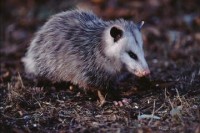
Subclass Metatheria (marsupials)
- Order Didelphimorphia (opossums)
- Order Paucituberculata (includes shrew-like insectivores)
- Order Dasyuromorphia (numbat and extinct Tasmanian wolf)
- Order Microbiotheria (contains only one living species named Dromiciops australis)
- Order Notoryctemorphia (the marsupial moles)
- Order Peramelemorphia (bilbies and bandicoots)
- Order Diprotodontia (kangaroos, koalas, wallaby and wombats)
Subclass Prototheria
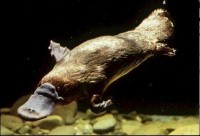
This subclass consists of the order Monotremata which includes two families of egg-laying Mammals:
- Family Ornithorhynchidae (the duck-billed platypus)
- Family Tachyglossidae (the spiny anteaters)
Evolution of Mammals
Amniotes were the first vertebrates to be fully terrestrial. Like their predecessors, the amphibians, amniotes have limbs and lungs. The most important distinctive feature of amniotes is the internal membrane of their eggs that allows the embryo to breathe and also retain water. This feature lets the amniotes to lay eggs on land, unlike amphibians that need water for laying eggs.
The earliest amniotes are believed to have existed during the Late Carboniferous. They evolved from the reptiliomorph amphibians that inhabited dry land. Over the next million years, the amniotes were divided into two distinct lineages _ the synapsids (mammals) and sauropsids (birds, lizards, turtles, snakes, dinosaurs and crocodilians). The synapsids have one hole or temporal fenestra on each side of their brains.
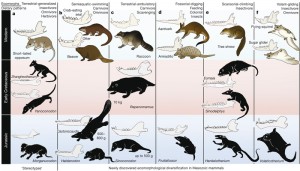
The first Mammals appeared around 210 mil years ago during the later part of the Triassic era, 60 mil years after the existence of the first therapsids (animals believed to be direct ancestors of mammals). The primitive Mammals expanded out of the usual nocturnal insectivore niche after the mid- Jurassic period. For example, animals in the Castorocauda genus had special adaptive features that allowed them to swim, dig and catch fish.
Majority of the Mammals existing in the Mesozoic were triconodonts, multituberculates and spalacotheriids. Teinolophos is the earliest known monotreme or egg-laying mammal which is thought to have evolved from the original prehistoric amniotes.
Anatomy of Mammals
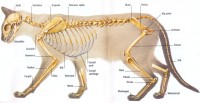
Skeletal System
Majority of these animals, including giraffes, bats, whales and humans, have 7 cervical vertebrae (neck bones). However, animals like the two-toed sloth and manatee have 6 cervical vertebrae while the three-toed sloth has 9 cervical vertebrae.

Respiratory system
Animals belonging to this class respire by inhaling oxygen and exhaling carbon dioxide. Respiration is performed through the two spongy textured lungs. The muscular diaphragm plays an important role in carrying out the breathing. The diaphragm separates the thorax from abdominal cavity and forms a dome with its convex side towards the thorax. The dome flattens when the diaphragm contracts, which increases the volume of the cavum around the lung. Air enters the body during inhalation through the nasal and oral cavities to expand the alveoli, flowing via the larynx, trachea and the bronchi. The opposite effect is produce by the relaxation of the diaphragm during exhalation.
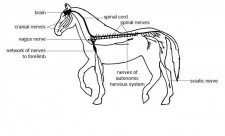
Nervous system
The brains of the placental mammals possess a corpus callosum, which is absent in monotremes and marsupials. Monotremes have the lowest number of Brodmann's areas (cortical areas); around 8 to 10 and they are also the smallest in size. The highest number of Brodmann's areas among all Mammals is found in the placentals (up to 50).
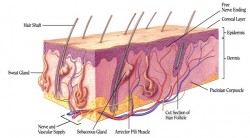
Skin
The Integumentary system or skin is comprised of three layers: the epidermis, dermis and hypodermis. The epidermis layer is usually 10-30 cells thick with its principal function being protecting the skin from water. The outermost cells in the epidermis are constantly lost while the innermost cells multiply very quickly and push outward. The middle layer or dermis is 15-40 times thicker compared to the epidermis. This layer is comprised of blood vessels and bony structures. The hypodermis is the innermost skin layer, comprising of adipose tissue. This layer is responsible for storing lipids and for providing cushioning and insulation. The thickness of the hypodermis layer can vary from one species to another.
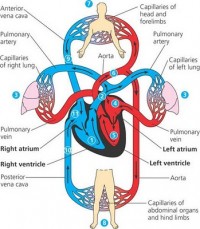
Circulatory System
These animals have four-chambered hearts with separate right and left ventricles. Other components of the circulatory system are blood, which carries oxygen and nutrients to different parts of the body and the blood vessels. The four heart chambers prevent any mixing of the oxygenated blood from the pulmonary (lung) circulation and the deoxygenated blood from the systemic (body) circulation.
Digestive System
Carnivorous Mammals have a simple digestive system because the lipids, proteins and minerals found in their diet are very easy to digest. But the herbivorous animals in Mammalia class have a more specialized digestive system for breaking down the complex carbohydrates.
The main components of the digestive system include:
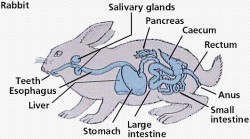
- Oral cavity
- Pharynx
- Esophagus
- Stomach
- Small intestine
- Large intestine
It has an alimentary canal and different accessory glands that help in digestion by secreting digestive fluids. The digestive tract of these creatures has a four-layered wall. The lumen of the digestive tract has a mucus membrane called the mucosa. The mucosa is followed by a connective tissue layer and a smooth muscle layer. The outermost layer is comprised of connective tissues, being attached to the body cavity membrane.
Excretory System
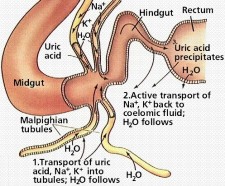
The excretory system in most of the species consists of two kidneys, a renal artery, nephrons and glomeruli. The main function of the kidneys is to filter the blood of all the metabolic waste products and transporting the urine through the uterus to be stored in the urinary bladder. The urine is then excreted from the bladder.
Characteristics of Mammals
Modern Mammals have many characteristic features that help to distinguish them from other amniotes and also the amphibians:
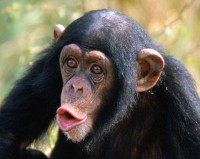
- Hair: The presence of body hair is a unique characteristic of Mammals. Animals from no other class have true hair, while all mammals are at least partially covered with hair at some stage in their lives. For example, dolphins and whales are born with mustaches that fall out as they become adults.
- Mammary Glands: The females of all Mammal species have mammary glands that produce milk for nursing the offspring. Mammary glands are actually modified sweat glands, which are also a distinctive feature present in these animals.
- Diphyodonty: This is the typical tooth replacement pattern seen in Mammalians. In this pattern, tooth replacement occurs only once in the entire lifetime of the animals. The juveniles have smaller and weaker teeth compared to the adult teeth. It is called the deciduous teeth which fall out to be replaced by the stronger and larger permanent teeth as the animals grow up.
- Endothermy: This refers to the ability to control one's own body temperature and keep it relatively constant regardless of the outside temperature. All mammals are Endothermic or warm-blooded.
- Four-chambered heart: Their hearts are distinctively separated into four chambers, 2 atria and 2 ventricles. This feature helps to distinguish them from reptiles and amphibians. However, birds also have four-chambered hearts.
- Neocortex: The presence of the neocortex region in the brain is a unique feature of these animals.
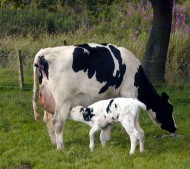

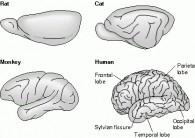
The above characteristics help to classify living animals. However, these gland and soft tissue features cannot be used for identifying fossils of prehistoric mammals. The following anatomical traits are observed for this purpose:
- A single bone in the lower jaw: Another characteristic feature seen in the Mammalian species is the single bone in their lower jaw which is directly attached to the skull. This bone is known as the dentary as it holds the lower jaw teeth.
- Three bones in middle ear: The unique arrangement of three middle ear bones, known as the incus (anvil), malleus (hammer) and stapes (stirrup) is another important characteristic.
- Jaw joint: In Mammals, the dentary (lower jaw bone holding the teeth) and the squamosal (a small skull bone) converge to form the jaw joint.
- Prismatic enamel: The tooth surface of these animals is coated with enamel consisting of prisms _ rod-like structures that extend from the dentin to the surface.
- Occipital condyle: Unlike most tetrapods, Mammals have two knobs at the skull's base that fit into the uppermost vertebra.
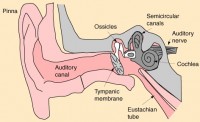
Mammal Habitats
Mammals are found in all types of habitats and they can adapt to almost all climatic conditions. They inhabit tropical rainforests, savannas, temperate regions and extremely cold climates. Many species live in underground burrows while others dwell on trees.
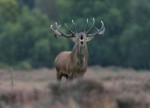
Land Habitat: Majority of the species live on land and can be found in forests, deserts, grasslands and mountains. Most of the well known Mammals, like lion, tiger, bear and dog are land animals.

Marine Habitat: There are around 128 different species including whales, seals, walruses and dolphins that live in ocean habitats. But they do not inhabit very deep waters as they need to resurface from the water regularly to get oxygen.
Arboreal Habitat: Many species are arboreal, meaning they live mainly in trees. Squirrel, sloth, marmoset and koala are examples of arboreal Mammals.
Mammal Reproduction
Most of these species are viviparous and give birth to live offspring. The five monotreme species including the platypuses and echidnas are the only egg-laying Mammals. Almost all the species practice sexual reproduction. The sex determination system of the monotremes is quite different than that of many other animals from this class.

Viviparous Mammals are included in the Theria subclass with only two extant infraclasses; the marsupials and the placentals. The gestation period is very short in the marsupials (such as kangaroo), with the animals giving birth to undeveloped newborns. The placental species generally have long gestations periods and give birth fully developed young. Elephants have the longest gestation period among Mammals, which lasts for around 22 months. The number of offspring born can vary from one to many depending on the species.
Mammal Life Cycle
They do not undergo any larval stage or metamorphosis to become adult animals. Mammal young are born as miniature versions of their adults with little physical differences. The babies are taken care of by the adults until they become capable of fending for themselves. The underdeveloped marsupial babies usually undergo further development within the marsupium (the pouch-like sac) located at the front side of the female's abdomen. The physical growth of the young Mammals continues until they reach the adult age.
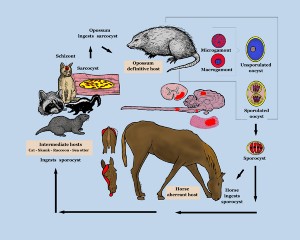
The adult females have mammary glands that produce milk, which is fed to the young as their primary nutrition source. The babies of the egg-laying Mammals lick the milk secreted by the mammary glands of the females onto the mammary patch located on their bellies.
Mammal Adaptations
Animals belonging to this class have different adaptive features to survive in their respective surroundings and climatic conditions.
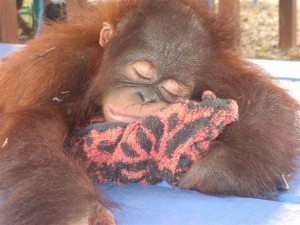
General Adaptations
- Many land Mammals have elongated distal limb bones for longer legs which allow them to run fast by covering longer distances in each stride.
- Animals that live in underground burrows have short, thick forelimbs that help them to dig.
- Carnivorous species have a special dental arrangement with a reduced number of pre-molars that produce a wide space between the canines and other teeth. This allows them to inflict deep bites.
- Large Mammals like elephants have thick leg bones to support their body weight.
- Nocturnal species have enhanced vision which enables them to see and hunt even in complete darkness.
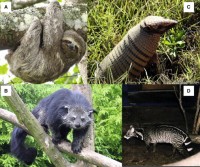
Arboreal Adaptations
- Animals that live in trees have thicker, shorter limbs that help them to hold on to tree branches.
- The enlarged forefeet with long claws are another useful adaptive feature of the arboreal species.
- The tree-dwelling species also have prehensile tails that work as a fifth limb.
- They also have advanced depth perception ability and binocular vision.
- These animals have a free arm movement range due to their ball-and-socket shoulder joints.
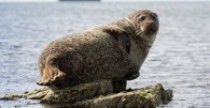
Aquatic Adaptations
- The aquatic species have flippers or webbed feet so that they can move in water.
- Their valvular nostrils and ears prevent the water from entering their nose and ears.
- The streamlined or fusiform shape of their body makes it easier to move under water.
- Many species have flattened tails that help them to propel and maneuver. Animals like dolphins and whales have dorsal fins which also assist them in locomotion.
Aerial Adaptations
Mammals belonging to the Order Chiroptera (bats) exhibit special adaptive features that enable them of true flight:
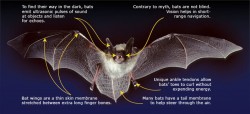
- Their forelimbs have modified to form wings, with a patagium membrane stretching from their body over the four limbs.
- Their metacarpals and phalanges are greatly elongated to enable them to fly.
- All their bones are slender and light-weight which reduces the total body weight, making flying easier.
Mammal Conservation
Currently, many species from this class are listed as "Threatened" or "Endangered" by the IUCN. Many species such as the Crescent nail-tail wallaby, Steller's sea cow and Flores cave rat have even faced complete extinction. The overall Mammal population throughout the world is still deteriorating with around one-quarter of the total species being threatened with extinction.
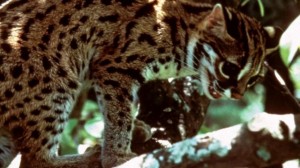
The wild life conservation units in different countries are taking important measures for protecting different species from the class Mammalia. The Marine Mammal Protection Act was passed in the US by President Richard Nixon in the year 1972 for ensuring the conservation of different oceanic species. Various other species are also protected by law in different countries.

